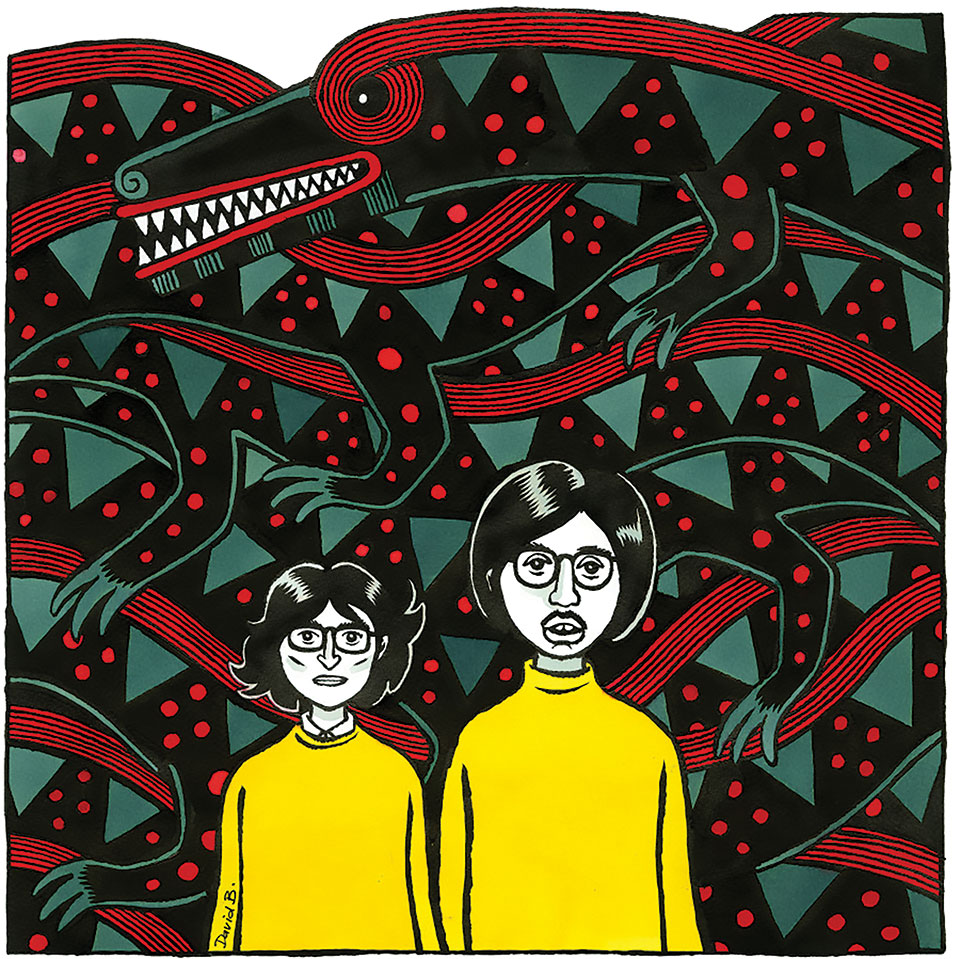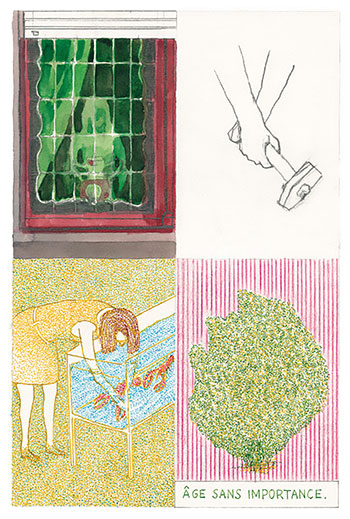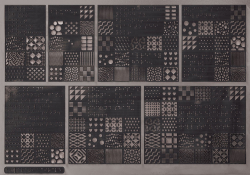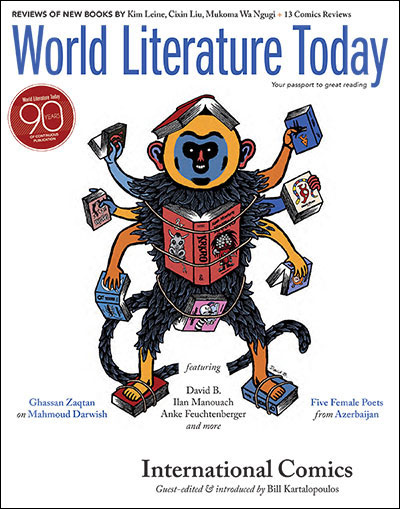Discovering International Comics

I’m so pleased to guest-edit this comics-themed issue for World Literature Today for many reasons. Personally—and perhaps most selfishly—this issue allows me to express a side of my engagement with comics that I don’t always get to express in other work that consumes so much of my time. Every year I work as series editor for the Best American Comics series, published annually by Houghton Mifflin Harcourt. It is my job to receive hundreds of submissions each year and to further seek out excellent work at comics festivals, comic-book stores, online, and elsewhere. I read many, many comics every year in my quest to assemble a preselection of material that each year’s special guest editor can select from in order to put together an annual comics anthology that maintains a high level of quality while reflecting the particular tastes of each year’s guest editor. (The Best American Comics 2015 was guest-edited by Jonathan Lethem.)
Working on Best American Comics presents me with a tremendous and unique opportunity to engage deeply with contemporary comics. But by its very nature, the series comes with a number of constraints, which exile large swaths of excellent work I might encounter in any given year. For one thing, an annual anthology dedicated to the past year’s best comics remains laser-focused on “the new,” as defined by a twelve-month period preceding each volume’s assembly. (World Literature Today has a similar prescription built into its title.) It’s good to be contemporary, and profoundly valuable to maintain a heightened critical sensitivity to new developments in any creative field. But comics in particular has seen a flood of long-in-coming historical reprint projects over the past several years, ranging from consensus essentials (The Complete Dick Tracy) to outright revelations (Peter Maresca’s full-size restorations of turn-of-the-twentieth-century newspaper comics pages, published as Sunday Press Books). In terms of relevant aesthetics, these historical excavations stand to influence contemporary and future comics as much as anything produced within the past year.
And then there’s that word “American.” Technically, Best American Comics covers all North American comics (including Canada and Mexico) but only covers work by North American artists (and so excludes international works published in translation). This is certainly a reasonable constraint for countless pragmatic and some cultural reasons. But this site-specific constraint does build a rigid wall between one of my major work activities—editing Best American Comics—and one of my major enthusiasms: exploring international comics.

(Frémok/Actes Sud BD, 2014)
I’ve been very fortunate to travel to France about twice a year for the past several years, often as a guest of comics festivals, including the Festival International de la Bande Dessinée (FIBD) in Angoulême. The Angoulême festival is the largest comics festival in the Western world and, unlike large-scale, media-friendly comic-book conventions in the US, remains focused on comics and publishing (rather than branching out into films, video games, etc.). With its many exhibits, author events, and massive tents housing publishers large and small, the FIBD presents a unique opportunity to discover not only the vast breadth of Franco-Belgian French-language comics publishing but also the many comics artists and publishers who travel to Angoulême from around the world to exhibit their work. I’ve also been fortunate to travel to the Helsingin Sarjakuvafestivaalit in Helsinki, Finland, to further explore the quite robust and experimental world of Finnish comics. That festival also has an international character but one more focused on northern and eastern Europe, presenting a different view than the Angoulême event. And I gained a completely different perspective on world comics when I visited the Entreviñetas festival in Colombia, which assembles artists from all over South America and puts them into contact with artists from Europe and North America.
In every way I can, I’ve also tried to make this cultural exchange a two-way street. Having been involved with the organization of many independent comics festivals in the US, I’ve worked to bring artists and publishers from France, Belgium, Finland, Colombia, and elsewhere to events including the MoCCA Arts Festival in NYC, the Brooklyn Comics and Graphics Festival, the Small Press Expo (SPX) in Bethesda, Maryland, and ICAF: The International Comic Arts Forum, an itinerant academic conference. I’ve conducted numerous public conversations with international artists and even started a small-press publishing imprint, Rebus Books, to publish a translation of a French graphic novel that I was crazy about (Barrel of Monkeys, by Florent Ruppert and Jérôme Mulot).
Exploring the past and present of American and international comics: these activities don’t feel separate to me. They inform one another. Working on Best American Comics keeps me tightly focused on a very specific pool of material for countless hours every year, but it’s incredibly valuable to have a broader international perspective as I make hundreds of critical distinctions and decisions. An international perspective saves me from a kind of blinkered relativism that might develop if I operated solely within a single national (or continental) tradition. Cultural context remains key, of course, but knowing about the achievements of international artists helps keep the North American work before me in perspective just as much as knowing about the specific historical tradition from which these comics have emerged.
International comics artists in general have less anxiety about allying or connecting their practice to the broader history of art and culture, including historical avant-garde movements.
Although France and Belgium are much smaller countries than the US, I’ve always admired the richness and diversity of francophone comics. From an aesthetic perspective, that field is arguably more robustly diverse than the American comics field and more readily accommodates work that pushes at the boundaries of the form. This is, in part, because western Europe did not experience the kind of anticomics hysteria that plagued the US in the 1950s and led to the adoption of the heavily censorious Comics Code of 1954, which limited commercial American comics to child-appropriate material. For generations, the Comics Code created a stigma that comics, reduced to a handful of genres, were most appropriate for immature or underdeveloped minds. Perhaps relatedly, I think this is also because international comics artists in general have less anxiety about allying or connecting their practice to the broader history of art and culture, including historical avant-garde movements.
Much of the work I’ve selected to spotlight in this issue’s features is in this aesthetically adventurous vein. In the US, the rise of the “graphic novel” has often been characterized as “literary” in character, but in a way that privileges conventionally novelistic narrative structures, whether the work is fictional or reality-based. But if we think of the field of literature as being broad enough to accommodate experimental work and poetry, I think this type of work fits right into this magazine’s mission. More and more American artists are also making work like this, although they exist within the small press and the underground rather than the mainstream of publishing culture. And artists from all over the world who are pushing the boundaries of what comics can be are finding one another and publishing their work together in international anthologies and discovering that their work has, in some ways, a stronger connection to an international comics avant-garde than it has to the traditions of their respective countries’ comics cultures. And when I see this exciting work from so many nations assembled together, here in this issue and elsewhere, I feel that I am looking at something else that an annual anthology of the previous year’s work can’t cover: the future of comics.
Brooklyn, New York













